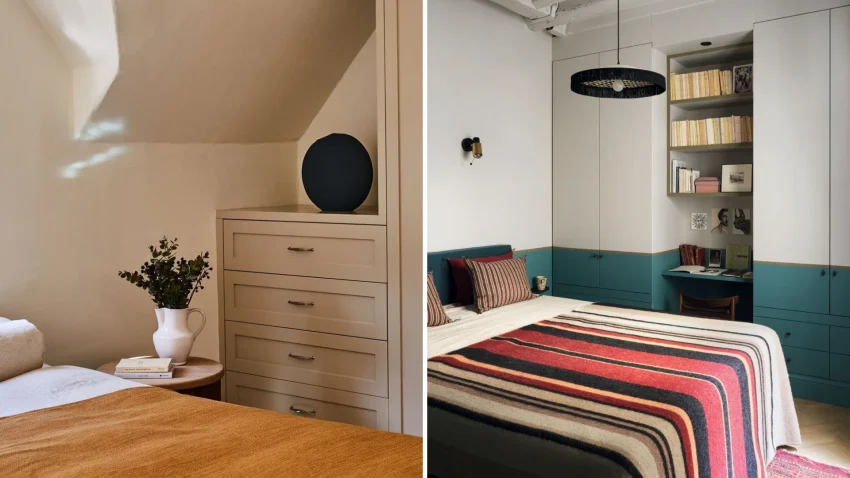In our fast-paced urban settings living in a fast-paced urban environment, the way of life is frequently challenged in the cramped corners of tiny living spaces. The limitations of a small home can be a challenge but they also offer the opportunity to create clever design that can turn even the tiniest of spaces into a relaxing retreat. Letting the experience of an interior designer isn’t an expense, but rather an investment in the right direction if every square inch is important.
This guide is comprehensive and will tell the story of transformation in space and explore how creative designs, multifunctional furnishings, as well as the expert design that an interior design professional can provide combine to create new perspectives within the walls around us. It doesn’t matter if you’re a city slicker looking to reduce your footprint or looking to make the most of your guest space or loft your path to a well-designed living space starts with this guide.
Evaluate the Role of Interior Designers
The expertise of an interior designer is valuable to bring a consistent design, precision and practicality to an area that is small. Designers are educated to think about every aspect of design such as lighting and color scheme and the nature of space, resulting in a stunning and efficient result. Additionally, interior design costs can be customized to meet your needs which makes it a great investment for any space. It is therefore crucial to comprehend the job of a designer in interior design as well as how they could assist you to make the most of your space.
1. Layout and Planning of Space
Space planning that is efficient will create an appealing and functional living space. It’s the strategic positioning and arrangement of furniture and accessories that creates the basis of design for small spaces.
Evaluate Available Space
Start by taking measurements and creating a scale drawing of the space. Knowing the exact dimensions of the room will allow you to determine what’s going to be accommodated and the best way organize it. Make sure to take into consideration any permanent fixtures like windows, or built-in shelves.
Tips for Arranging Furniture
Picking the right pieces is only one part in the overall puzzle. The arrangement of them will significantly affect the spatial flow and illusion of the space. Moving furniture far from walls can give the illusion of spaciousness and can be achieved by using light or slender designs that allow the eye to wander across the space.
Making Use of Vertical Space
In a tiny space every surface is important. Make use of wall-mounted cabinets, bookshelves as well as hanging organizers to make the floor. It not only provides storage space, but it also draws your eye upwards and makes the space feel more spacious.
2. Versatile Storage and Furniture Options
Storage that is hidden and multi-purpose can help against cramped spaces.
Furniture that Folds and Modular
Consider buying pieces that are able to be adapted to various requirements, like an eating table which can be hidden away or a couch with an optional bed.
Covert Storage
Use ottomans that have storage inside as well as built-in benches that come with lids that lift, as well as beds with drawers that keep things in a safe place but easily accessible.
Personalized Built-Ins
Think about custom-designed solutions such as shelves and seating specifically designed to fit your home’s space. They will not only make the most of each inch, but also provide character and value to your home.
3. Color and Lighting Methods
Color and lighting are both important tools that can be used in small-space design. They can let light and color into an area, create depth and create an inviting atmosphere.
Natural Illumination
Make the most to maximize the use of light from natural sources by keeping your windows clean and installing curtains that block light. Mirrors should be placed opposite windows to reflect light throughout the space.
Choice of Color
Pick gentle, neutral colors to make the room feel larger. Furniture or accent walls in darker shades can add the illusion of depth and contrast.
Reflective surfaces & Mirrors
The right placement of mirrors can create an illusion of greater space. Mirrored surfaces on furniture or decor can help create this illusion.
4. Making the Most of Compact Kitchens
In kitchens with small spaces efficiency is essential. A thoughtful design and a well-organized layout will make even the tiniest cooking space appear spacious and easily accessible.
Effective Storage
Explore every storage option including hanging pans and pots as well as magnetic strips for knives. Make use of the cabinet’s interior doors by hanging hooks or using small shelves.
Appliances That Save Space
Try to find smaller models of common appliances, such as an ultra-slim dishwasher or a fridge that is small enough to fit underneath the counter.
Astute Company
Utilize stacking shelves, drawer dividers and other organizers to make your kitchen less cluttered and ensure that every item has a space.
5. Creative Bedroom Design Tricks
The bedroom is where you can relax and should be a spot to relax, even in a tiny space. By using these design ideas that you can create a space that feels more spacious than.
Bunk and Loft Beds:
By raising the bed, it frees the floor space to be used for other purposes. Loft beds can serve as an office or a reading space beneath, and bunk beds can be a fantastic option for children’s rooms.
Inventive Storage
Make use of storage bins under beds and also look for headboards with built-in shelves. Be sure to consider the doors’ backs or the space over cabinets and other furniture that is high.
Space Illusion
Utilize lights to your advantage. Wall sconces or pendant lights will free up space on tables for bed. A well-placed mirror can help make a room feel more spacious and open.
6. Inspiring Ideas for Bathroom Design
Bathrooms are often the tiniest space in the home, and it can be the most difficult to make. But, with some creative ideas it is possible to get the best use out of your bathroom without sacrificing style or utility.
Small-Space Fixtures
Choose the wall-hung sink or smaller shower or bathtub to make room for the floor space. Think about a corner toilet or a tankless one to cut down on weight.
Upright Storage
Use tall narrow cabinets or shelves for maximum vertical storage. Utilize bins or baskets to help you organize the storage area and make sure that small items are away from view.
Shrewd arrangement
Begin working in conjunction with the interior designers to develop an arrangement that flows and makes the best utilization of the space. Doors made of a barn or pocket can also help save valuable space by removing the swinging motion of a conventional door.
The process of maximizing the space you have available is both challenging but also extremely satisfying. If you follow the suggestions and strategies in this article and engage the assistance of an interior stylist you can design a home that is not just beautiful but also functional and personalized. With the proper strategy, every room regardless of size can be successfully and elegantly used to satisfy your needs in terms of lifestyle and personal preferences.
The process of transforming your tiny living space is a great investment in your wellbeing in the way you live your life. Make the most of this opportunity to bring innovation and practicality in the interior of your home and discover how the tiniest of rooms can be transformed into a spacious retreat.

